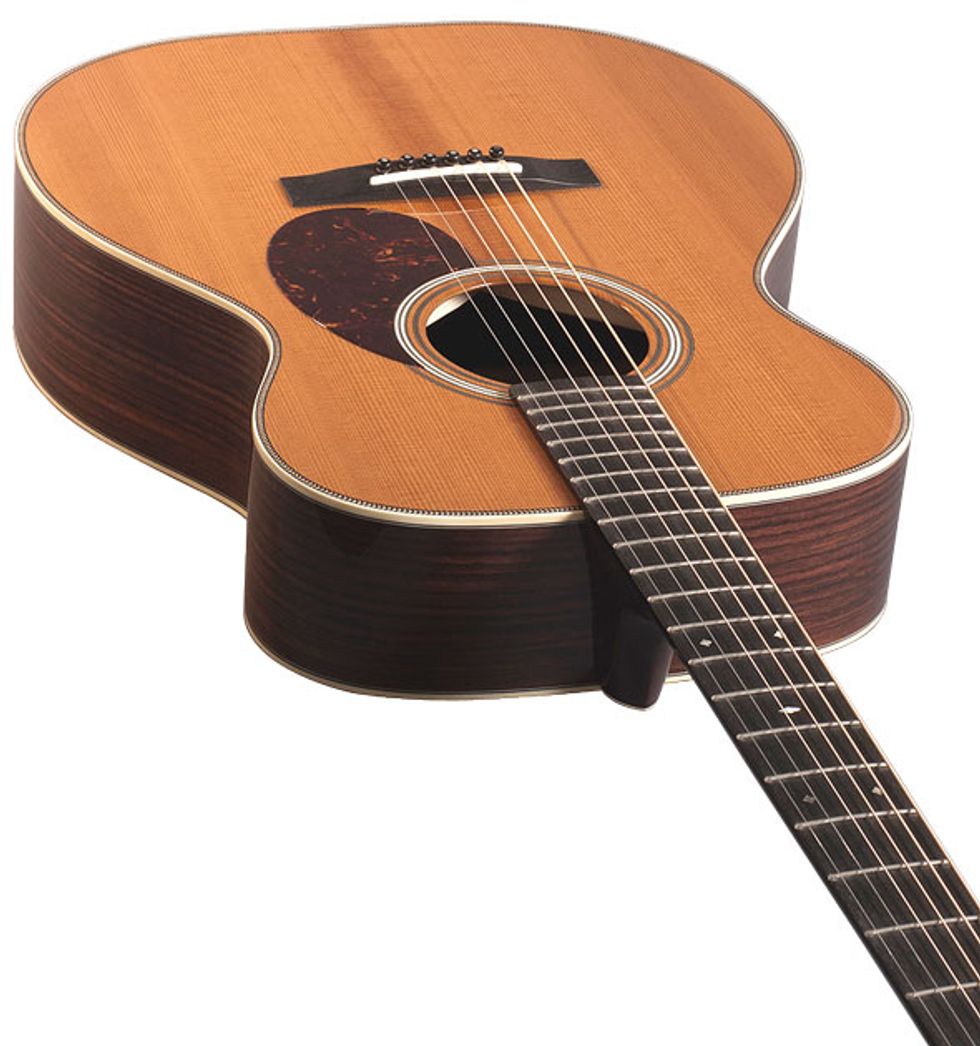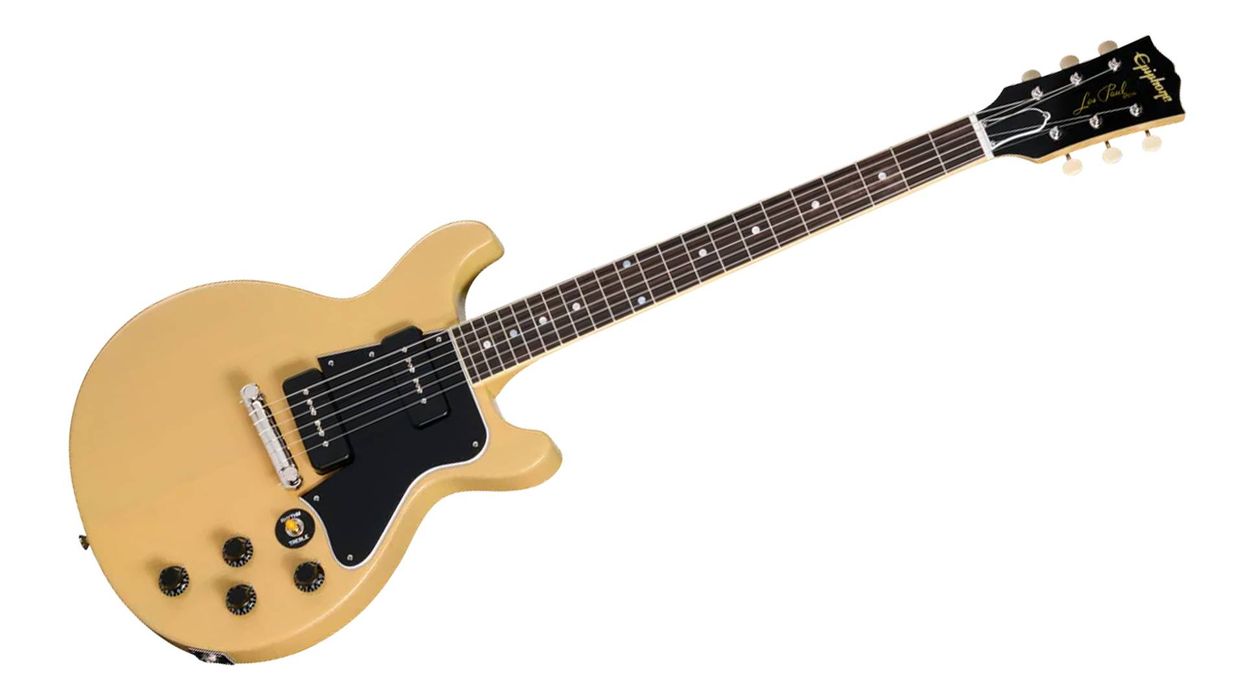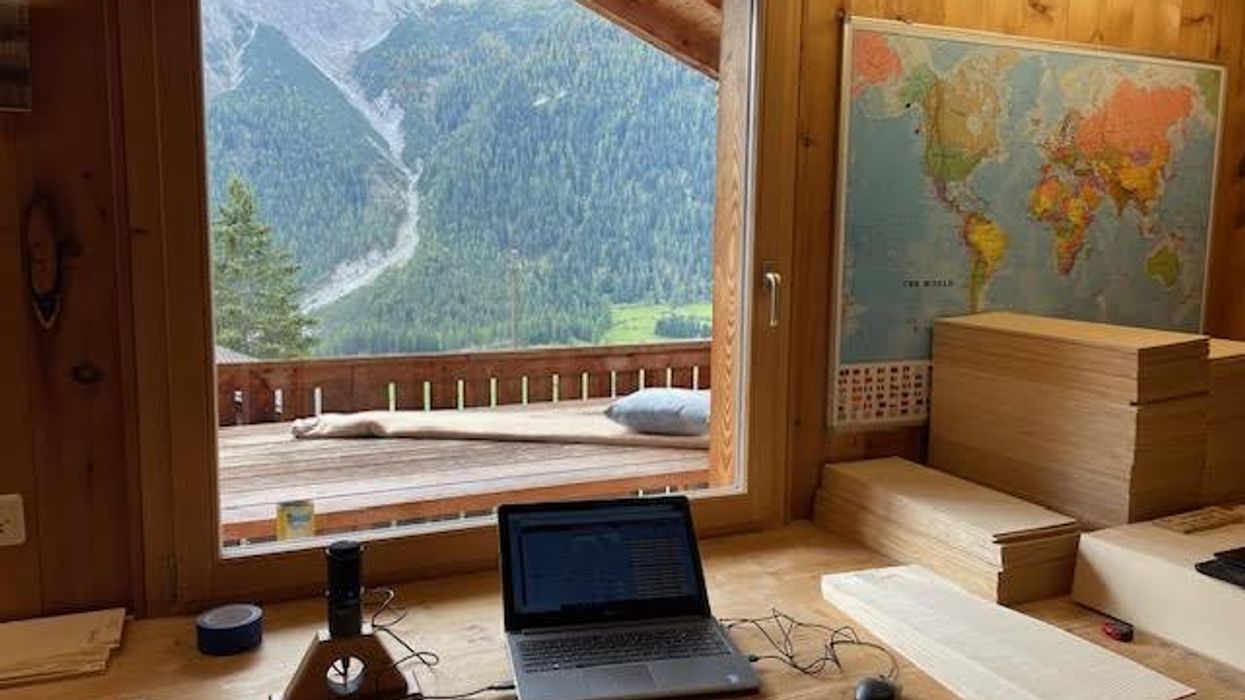Some of you may have already had a precursory introduction to the process and perceived benefits of wood torrefaction (also sometimes called “thermo-curing”) in relation to guitar building. Over the past couple of years, our suppliers first offered us top woods treated with the process, but we’re now seeing a limited selection of back and side woods as well.
I consider the process to be one of the only real breakthroughs in guitar-building materials in my 20-year (and counting) career.
The Process
I’ll attempt an explanation of the torrefaction process, but my knowledge of the finer details of how it’s done is somewhat limited. And since the really interesting part for us is how it affects guitar tone, I will keep this part very brief.
First, the wood is kiln-dried conventionally to a moisture level of 6 to 10 percent. The wood is then “cooked” in a torrefaction kiln at a high temperature while controlling atmospheric moisture and oxygen levels. After the moisture level is taken to zero percent, the wood is placed in a conditioning chamber where the level of moisture is raised to 3 to 6 percent.
The resulting wood boasts greater stability—especially beneficial as it’s exposed to atmospheric moisture during the life of an instrument—due to the closure of the cells when the water and sap is released from the wood. Another benefit is the beautiful golden-caramel color that results from the process. This is really nice as it relates to guitar tops, since the color comes out looking like older guitars with perfectly time-aged spruce.
Improved Tone: Myth or Legend?
I’m about as cynical as it gets when it comes to the latest fads in guitar building, but I am pretty much sold on this. Most of the time, the way I feel about things like hide glue, ivory saddles and nuts, bridge-pin changes, etc. is that, yes, if you change several different materials, you might be able to hear a difference, but you can’t hear the result of any one of these small “improvements” on their own.
Not the case with thermo-cured tops. We have built a lot of guitars with these tops in the last two years, and the evidence is overwhelming that it makes a difference. To me, these guitars are consistently among the top 10 percent of all of the guitars we’ve ever made in terms of tone and volume in a brand-new guitar. It’s hard to deny that the reason for this is that the thermo-curing simply speeds up the natural process of aging the top wood, just as the great 70-year-old guitars have undergone.
Any Downside?
The jury is still out on this. While we haven’t had any warranty issues with torrefied tops, others have. And I’m not sure that torrefied wood is as compatible with hide glue as it is with plain-old Titebond since the moisture has been almost completely removed. We’re also finding during the building process that the wood is a touch more brittle than non-thermo-cured wood.
These details have necessitated that we and our fellow builders adjust some procedures, yet we haven’t seen any reason why the guitars won’t hold up just as well over time. After all, the torrefaction process is supposed to add stability, not take it away. The only other downside I can think of is that some players might not favor the golden color and instead prefer to see the wood age naturally over time.
We’re currently building a guitar for the upcoming NAMM 2015 show that represents our first with thermo-cured maple for the back and sides. It will be interesting to see if the torrefaction process to back and side wood makes a significant difference in tone and volume.
Once we get the few bugs worked out of the process and the idea catches on, I think we’ll be seeing a lot more guitar-wood choices (and almost all tops) treated with this exciting new process. If you haven’t heard or played a guitar with a torrefied top yet, get down to your local guitar store ASAP. You may find yourself as enthused as I am.








![Rig Rundown: AFI [2025]](https://www.premierguitar.com/media-library/youtube.jpg?id=62064741&width=1245&height=700&quality=70&coordinates=0%2C0%2C0%2C0)






